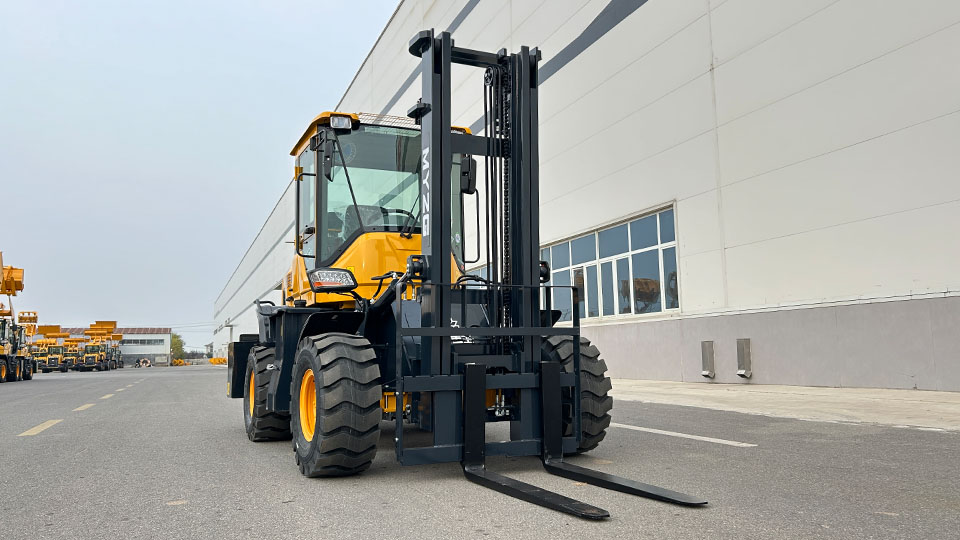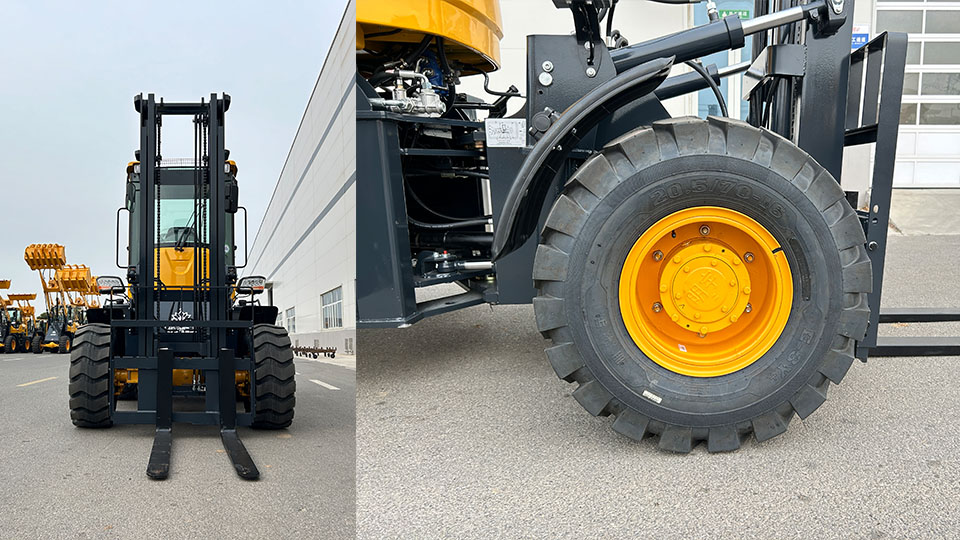
Introduction
Forklifts are essential in industrial and warehouse settings for moving and lifting heavy materials. Their weight and lifting capacity are critical factors that influence their performance, safety, and suitability for specific tasks. This article delves into the weight of various types of forklifts, their lifting capacities, and the factors that affect these parameters.
Understanding Forklift Weight
The weight of a forklift is determined by several factors, including its size, design, materials used, and the type of power source (electric or internal combustion). Here’s a breakdown of these factors:
Size and Design
Compact Forklifts: These are smaller and lighter, typically weighing between 1,000 to 3,000 pounds.
Pneumatic Tire Forklifts: Designed for rough terrains, these can weigh between 5,000 to 15,000 pounds.
Cushion Tire Forklifts: Best suited for smooth indoor surfaces, they weigh between 3,000 to 10,000 pounds.
Materials Used

Steel: Heavier and more durable, often used in construction and heavy-duty applications.
Aluminum: Lighter and corrosion-resistant, commonly used in electric forklifts for indoor use.
Power Source
Electric Forklifts: Generally lighter due to the use of batteries, weighing between 2,000 to 10,000 pounds.
Internal Combustion (IC) Forklifts: Heavier due to the engine and fuel tank, typically weighing between 4,000 to 30,000 pounds.
Lifting Capacity
The lifting capacity of a forklift refers to the maximum weight it can safely lift at a specified load center distance. This capacity is crucial for determining the suitability of a forklift for a particular task. Here are some considerations:
Load Center Distance
Load Center Distance: The horizontal distance from the face of the forks to the center of the load. The lifting capacity decreases as the load center distance increases.
Types of Loads
Palletized Loads: Forklifts are often used to lift and transport palletized goods.
Non-Palletized Loads: May require special attachments or handling techniques.
Safety Factor
Safety Factor: A forklift’s lifting capacity is typically rated with a safety factor to ensure that the load does not exceed the maximum safe lifting capacity.
Factors Influencing Forklift Weight
Several factors influence the weight of a forklift, including:
Engine and Fuel System
IC Forklifts: Equipped with engines and fuel tanks, these components significantly add to the overall weight.
Battery and Electrical Components
Electric Forklifts: The batteries and electrical systems are lighter than their IC counterparts but still contribute to the overall weight.
Attachments and Accessories
Attachments: Fork positioners, side shifters, and other accessories can add weight to the forklift.
Counterbalance
Counterbalance: Forklifts have a counterweight at the rear to balance the weight of the load. This counterweight is a significant factor in the overall weight of the forklift.

Safety Considerations
Safety is paramount when operating forklifts, and their weight plays a crucial role in safety considerations:
Stability
Stability: The weight distribution of a forklift affects its stability. Proper weight distribution is essential to prevent tipping accidents.
Load Handling
Load Handling: The weight of the forklift must be considered when handling loads to ensure that the combined weight does not exceed the forklift’s lifting capacity.
Maneuverability
Maneuverability: Lighter forklifts are generally easier to maneuver, which can be an advantage in tight spaces.
Maintenance Requirements
Maintaining the optimal performance and safety of forklifts requires regular maintenance, which can be influenced by their weight:
Tires
Tires: Heavier forklifts put more stress on the tires, requiring more frequent inspections and replacements.
Hydraulic System
Hydraulic System: The hydraulic system in a forklift must be capable of handling the weight of the forklift and the loads it carries.
Battery Maintenance
Battery Maintenance: Electric forklifts require regular battery maintenance, which can be influenced by the weight of the forklift and the demands placed on the battery.
Types of Forklifts and Their Weights
Different types of forklifts are designed for specific tasks and environments, and their weights vary accordingly:
Electric Forklifts
Walkie Stackers: Weigh between 1,000 to 3,000 pounds.
Rider Electric Forklifts: Weigh between 3,000 to 10,000 pounds.
Internal Combustion Forklifts
Pneumatic Tire Forklifts: Weigh between 5,000 to 15,000 pounds.
Cushion Tire Forklifts: Weigh between 3,000 to 10,000 pounds.
LPG/Gasoline Forklifts: Weigh between 4,000 to 30,000 pounds.
Specialized Forklifts
Reach Trucks: Designed for narrow aisles, weighing between 3,000 to 5,000 pounds.
Order Pickers: Used for picking orders, weighing between 2,000 to 5,000 pounds.
Conclusion
The weight of a forklift is a critical factor that influences its performance, safety, and suitability for specific tasks. Understanding the weight of different types of forklifts and their lifting capacities is essential for operators, safety managers, and those involved in material handling. By considering the factors that influence forklift weight and ensuring proper maintenance and safety practices, organizations can optimize their material handling operations and maintain a safe working environment.
References
National Safety Council. (2020). Forklift Safety Training Manual.
American Industrial Truck Association. (2019). Forklift Operator’s Handbook.
Crown Equipment Corporation. (2018). Forklift Fundamentals.
Toyota Material Handling. (2017). Forklift Safety and Operation Guide.
This article provides a comprehensive overview of the weight of various types of forklifts and their lifting capacities. It covers the factors influencing forklift weight, safety considerations, and maintenance requirements, offering valuable insights for operators, safety managers, and those involved in material handling.
Name: selena
Mobile:+86-13176910558
Tel:+86-0535-2090977
Whatsapp:8613181602336
Email:vip@mingyuforklift.com
Add:Xiaqiu Town, Laizhou, Yantai City, Shandong Province, China